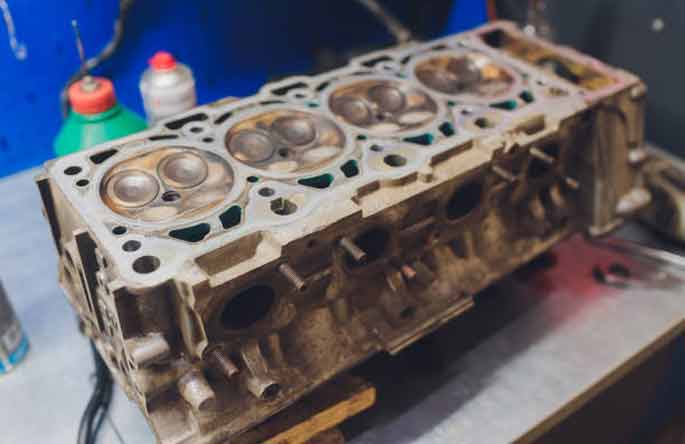Whenever you have a blown head gasket, there are a few different things that you should do. First, you should diagnose the problem so that you can get to the cause. Second, you should fix the problem so that you can avoid having it happen again.
Symptoms

Symptoms of a blown head gasket include a thick cloud of smoke from the exhaust. The engine may also begin to overheat. It is important to identify the symptoms of a blown head gasket as quickly as possible. If left unresolved, it can lead to expensive repairs and longer repair times.
The gasket separates the cylinder head from the engine block, and helps to maintain proper compression. A failed gasket can cause an unexpected decrease in the compression ratio, which can have a dramatic effect on performance. It can also result in a rough idle.
Overheating is one of the most common reasons for a blown gasket. Overheating can be caused by a loose serpentine belt, a faulty radiator fan, or a clogged radiator. It can also be a result of a faulty EGR system.
Diagnosing a blown head gasket
Identifying the signs of a blown head gasket can save you a lot of time and money. A faulty head gasket can cause engine damage and reduce the power of the engine. If you have any of these symptoms, you need to get the problem fixed as soon as possible.
A blown head gasket is one of the most common problems with automobiles, and can cause a lot of trouble. The damage caused by a faulty head gasket can be significant, and can have irreparable effects on the engine.
Symptoms of a blown head gasket include a thick, smokey smell in the exhaust. You may also notice bubbles in your radiator. These bubbles can be boiling coolant. These can indicate a leak elsewhere in your cooling system, and can be caused by a faulty radiator cap.
HG-1 Head Seal can cause carbon monoxide poisoning
HG-1 Head Seal may be a great product, but the installation of it can expose you to a lot of hazardous fumes. To minimize the risk, make sure you follow these tips before and after installation.
One way to ensure that your head seal is performing at its best is to install it in a well ventilated location. Ideally, you should position it in a sheltered space. You should also ensure that the sealing mechanism is tight enough to separate the oil from the water. This will prevent the dreaded oil-water mix.
A small leak in your vehicle can lead to a steady stream of carbon monoxide. For this reason, it pays to keep your eyes open. This is especially true if you drive or live in an RV, which can be a prime source of noxious fumes.
Repairing a leaking cylinder head gasket
Having a leaking cylinder head gasket can be a problem. It can cause engine overheating and loss of power. It can also be expensive to repair.
The gasket needs to be able to provide a tight seal between the cylinder head and the engine block. The seal is essential for preventing oil and coolant from leaking out of the engine. It is also important for the internal combustion process to work properly.
If your car is having problems, check the coolant level. If it is low, this can cause the engine to overheat. It can also lead to white smoke coming from the tailpipe. It can also damage the catalytic converter.
If your vehicle is exhibiting signs of a cylinder head gasket leak, you should take the vehicle to a mechanic. They can help you diagnose the problem and get the cylinder head gasket repaired.
Avoiding future problems
Having a blown head gasket can be devastating to your engine and other engine parts. In fact, you can even cause irreparable damage to your vehicle if you don’t take steps to prevent it.
Depending on how severe your problem is, you may have to spend a considerable amount of money to fix it. But, if you pay attention to the steps involved in gasket replacement, you can save yourself some frustration and headaches.
Summary:
One of the most common reasons for gasket failure is due to improper installation. This is especially true for older vehicles. The cylinder head is a metal component and it expands quickly when heated. This causes the gasket to compress, squeeze and crush. The resulting pressure loss leads to a rough running engine.
